
views
Learning the Basics

Study the grammar rules. Chances are good that the grammar rules of your target language will be quite different from that of your native language. Spending some time learning how sentences are structured, such as the word order, parts of speech, and subject-verb agreement, will help you in the long run.

Start with common vocabulary. Words that you would use daily should be the first ones you learn. Try starting with personal pronouns (I, you, she, he, they, etc.) and common nouns (boy, girl, chair, table, city, teacher, restroom, school, airport, restaurant, etc.) before moving on to adjectives (green, thin, fast, beautiful, cold, etc.) or verbs (go, do, take, leave, offer, meet, etc.), which will need to be conjugated.

Learn basic phrases. You’ll likely want to figure out how to ask a few simple questions, such as “Where is the restroom/train station/hotel/school?” and “How much does this (coffee, newspaper, train ticket) cost?” You’ll also probably want to learn to say “My name is…” “What is your name?” “How are you doing?” and “I’m doing well/poorly.” Think of a few dozen phrases you want to know and start with those.

Make associations. One word may make you think of another. Try to build mental images or draw pictures based on connections. It doesn’t matter how obscure or silly they may seem if it will help you remember.
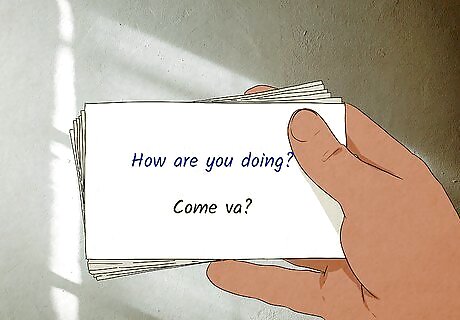
Practice. Repetition is one of the best ways to learn vocabulary. Make flash cards with your vocab words and go through them daily. You can even post the cards around your room or home so that you see them often. You can also use an automated flashcard generator (e.g., lingua.ly).
Trying Language-Learning Tips

Listen to foreign-language music. Listening to music can be a fun way to learn a new language. Songs you enjoy may be available in another language; this will make it easier for you to recognize words if you know the lyrics by heart. You can also choose songs you’ve never heard and print out the lyrics, then translate them.

Read your daily news in the target language. Identify a topic that you regularly read about (e.g., technology news) and read about it in the other language. Find online newspaper sections or blogs that cover that topic in the language you're learning. Try reading about the topic only in the target language.

Listen to foreign-language internet radio broadcasts. BBC World Service is a great place to start for foreign language broadcasts. You can also tune into many TV stations and watch news stories and shows produced in another language. This can be a lot more fun than simply reading grammar texts.

Watch movies or TV with either audio or subtitles in the target language. You could select the option for a voiceover in another language, while also selecting subtitles in your native language. Watch the movie or show to read the words in your language while hearing them in another. Conversely, listen in your native language while reading foreign subtitles. After a while, try to watch the movie or show in the foreign language with no subtitles.

Check out foreign-language podcasts. The huge advantage over internet radio is that they're downloadable. You can listen to the same show repeatedly until you feel you understand it. Don't be afraid to specialize, especially once you've got the basic vocabulary and grammar down — if you're into technology, for example, listening to tech-podcasts is a good place to start as many technology-related words and names are adapted from English.
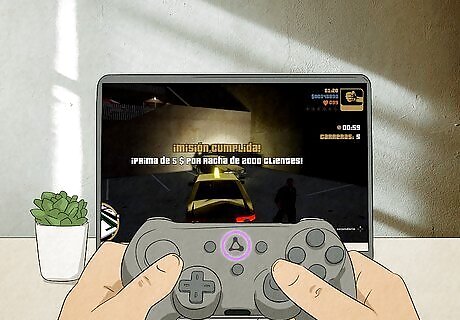
Play your usual games in the language you're learning. Many online and app games allow for language changes to the most commonly used languages. If this is the case for your game, switch to the language you're learning. Since you're already familiar with the game, you’ll be playing some of it intuitively. You will also see the new words regularly and in some cases, be forced to work out what is being said in order to advance through the game.

Meet up with native speakers in person or in chat rooms/forums. This can help you correct mistakes you are making as well as learn new tips and tricks for mastering the language. Once you have become semi-fluent, join a foreign-language social network, such as VoxSwap, Lang 8, or My Happy Planet. You could also change the language of your internet browser, which, for many sites, will cause it to change the language automatically.
Staying Motivated
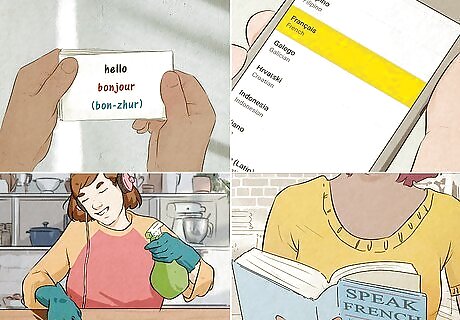
Change it up. Using the same materials or method every day can get old. Watch videos, read scripts, and play interactive games. Incorporate the new language into daily use in your reading, writing, and entertainment to reinforce what you're learning and build fluency.
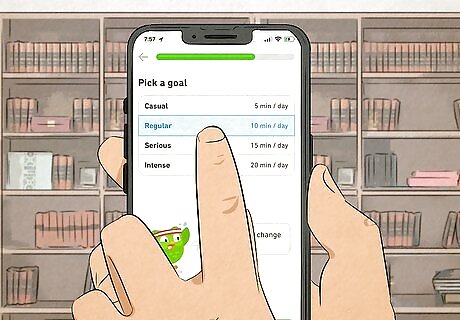
Make goals. You could decide to learn ten new words a day, or five new phrases. You could also choose to read a few pages in your target language each day, watch a show in the language, or listen to a few songs. Perhaps you want to set a goal based on speaking a certain amount in the target language each day. Be realistic, and set goals based on your personal learning style.

Don’t get discouraged. Learning a new language can be difficult. Don’t berate yourself if you aren’t fluent after a few months. Focus on what you have learned, and keep trying. Remind yourself why you wanted to learn a new language in the first place to help you stay motivated.
Choosing Course Materials
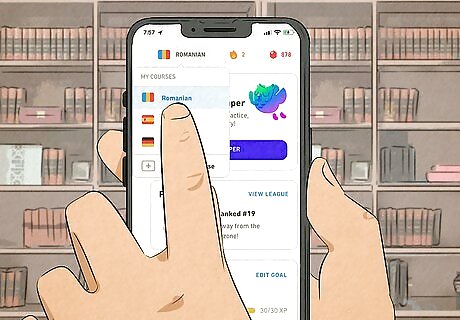
Get a language-learning app. There are tons of applications out there that will help you to learn a new language. Read reviews and choose one or two that you think will be both fun and helpful. This way you can learn on the subway or train, during breaks at work or school, and just about anywhere else. Duolingo and Busuu are great language course apps. LiveMocha is a fun chat and social language app. Memrise uses mnemonic devices to help you learn a new language. Mindsnacks is an education language-learning game.
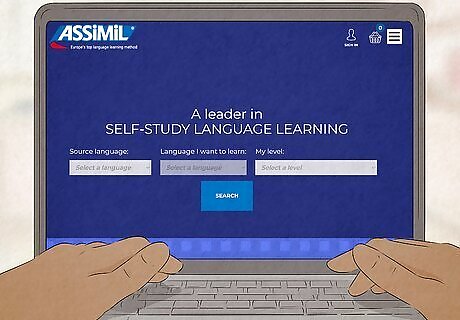
Use language-learning software. There are many different kinds of software for learning new languages on your own. Assimil is quite popular in Europe, though it is less well-known in America. This method uses audio dialogues and comes with a book as well as CDs. Teach Yourself is another popular method. It uses direct translation as well as audio exercises, level by level. If you are an auditory learner, listening to someone else speak the language may be the best way for you to learn it.

Pick out language-learning books. Purchase a grammar guide as well as a dictionary in the language you wish to speak. You’ll also need a dual-language book to see translations from your native language to the target language. Choose a few books, other than textbooks, such as novels or nonfiction in the language you wish to learn as well. If you are a visual learner, reading about the language may be the best way for you to learn it.

Immerse yourself in the target language. Immersing yourself means putting yourself in an environment where only that language is spoken. This doesn’t necessarily have to be a foreign country, it can also be a classroom or even your own home if you listen to music and watch television in the target language. You could also visit a section of your city where the particular language is spoken (e.g., if you live in a big city and are trying to learn Mandarin, hang out in Chinatown for a few hours). If you are a kinesthetic learner, immersion may be the best way for you to learn the language.

Create a booklet. Writing is a good way to memorize things. Writing down grammar rules and vocabulary in a booklet may be extremely helpful. First, pick out a notebook (it might help if it has lined paper instead of grid paper). Then organize it however you want. You can have grammar on the right hand pages and vocab on the left. You can also practice writing sentences in it. Maybe divide it into sections for grammar, vocab, and practice.















Comments
0 comment